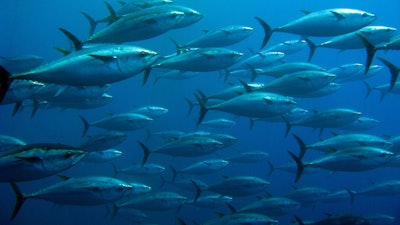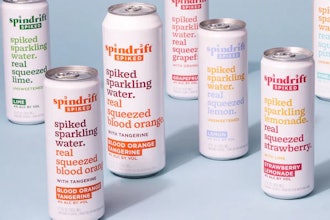
If there was ever an industry that was ripe for modernization – and with perfect timing – it is the seafood industry. The global seafood market was valued at $253 billion in 2021 and is projected to reach nearly $336 billion by 2025.1 This represents a 5.8 percent compounded annual growth rate (CAGR) – double that of the overall global F&B industry CAGR of 2.9.2
With this growth potential, the time is ripe for fish processors to extract even more value from their people and far greater yield from their raw materials and processes.
Smart Automation for Greater Yield
In order to achieve efficiencies as demand grows, more and more OEMs and end users are looking at modern smart automation infrastructures – for both new and existing plants – that will help deliver even greater yield from processing steps and methodologies that are founded on centuries of tradition and knowledge. In addition to increasing production output, there is also a growing focus on the supply chain, to help prevent fish products from deterioration, not only through the development of distribution channels, but also through improvements in technology, packaging, processing and storage.
Processing techniques such as heat treatment, temperature reduction and water-content control all help with the preservation of fish; and with the rise of deployment of these techniques, the demand for various types of fish processing equipment is expected to be strong in the coming years.
And, like many other industries that are already well into their digitalization journeys, it is smart solutions that will offer the biggest improvements, especially when the assets are tightly integrated with production and enterprise solutions. The resulting fully digital sea-to-plate data trail can then be established and leveraged to confirm maximum freshness and quality.
Although many trawlers are exploiting new and emerging technology, to drive greater onboard efficiencies, it is the processing procedures once the catch has been landed that have the most to gain from modern integrated and Connected Enterprise® solutions. When post-landing processes are undertaken manually, suppliers typically face workforce productivity and skills issues underpinned by monotony and the lower accuracy of what is often semi-skilled and unskilled seasonal labor – all issues that can be addressed by modern automation solutions.
Automation Addresses Skills Gaps
One must also consider the geography of some of these processing locations, which are often remote and experience harsh environmental conditions. From a personnel perspective this also makes it difficult to both employ and retain skilled labor, a significant advantage of fully automated solutions.
There is obviously a yield- and efficiency-improvement requirement, and growing demand from modern systems from the industry, but what do automation solutions providers need to do to target the precise needs of this industry?
Flexible solutions: built tough!
Like any industry, end users are looking for service, support and price, with rugged machines suited to the application and environment that deliver familiarity, hygienic design, and proven hardware based on open protocols and platforms that offer maximum flexibility and agility – without any black-box lock in or segregation.
As a key player in this industry, Rockwell Automation enables seafood OEMs and end users to modernize, connect and streamline their capabilities. Rockwell Automation smart connected solutions not only offer much greater real-time insights into process operations, but also help to deliver higher throughput, higher yield, and greater quality at higher speeds. All of which add up to satisfy growing demand.
With rising global demand and a shortage of skilled labor, the time is right to leverage advanced/smart automation technologies to capitalize on these market trends and drive your organization forward.
- https://www.statista.com/statistics/821023/global-seafood-market-value/
- https://www.businesswire.com/news/home/20200514005421/en/Global-Food-and-Beverages-Market-2020-to-2030---COVID-19-Impact-and-Recovery---ResearchAndMarkets.com























